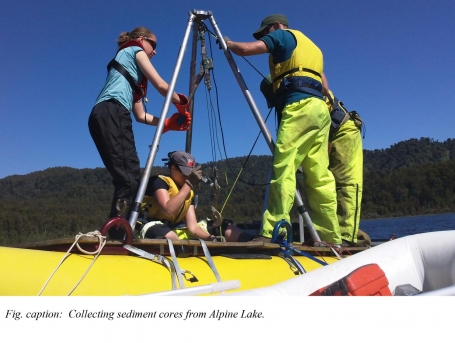
Southern Hemisphere Mid-Latitudes, NZ 2010
Southern Hemisphere Mid-Latitudes, NZ 2010
The Anatomy of Last Glacial Maximum (LGM) Climate Change in the Southern Hemisphere Mid-Latitudes: Paleoecological Temperature Reconstructions from Terrestrial Archives
Ann Dieffenbacher-Krall, Marcus Vandergoes, Erin McCann
Field Collaborators: Jamie Howarth, Delia Strong
Date: January 4-23, 2011
Hypotheses about what drives ice age climate change remain clouded with ambiguities because the timing and magnitude of maximum ice age cooling (Last Glacial Maximum, LGM) does not appear to match between the Northern and Southern Hemispheres. High resolution records of the precise timing and magnitude of climate change in the mid-latitudes of the Southern Hemisphere are strategic for understanding the forces driving global glacial cycles and identifying interhemispheric leads and lags in the climate system.
Terrestrial archives (lake sediment) from southern New Zealand are ideal for such research because the region is sensitive to subtle changes in the circumpolar westerlies and supports distinct vegetation and chironomid (non-biting midge fly) ecological zones. Pollen and chironomids from this reion have known relationships to temperature and can provide continuous, datable, quantitative estimates of terrestrial temperature change. The research has two primary goals: 1) to develop paleotemperature reconstructions for the western and eastern margins of the Southern Alps from two lakes located outside LGM moraine belts using pollen and chironomid temperature inference models, and 2) to determine the precise timing and duration of LGM climate changes for this location using detailed AMS radiocarbon dating.

